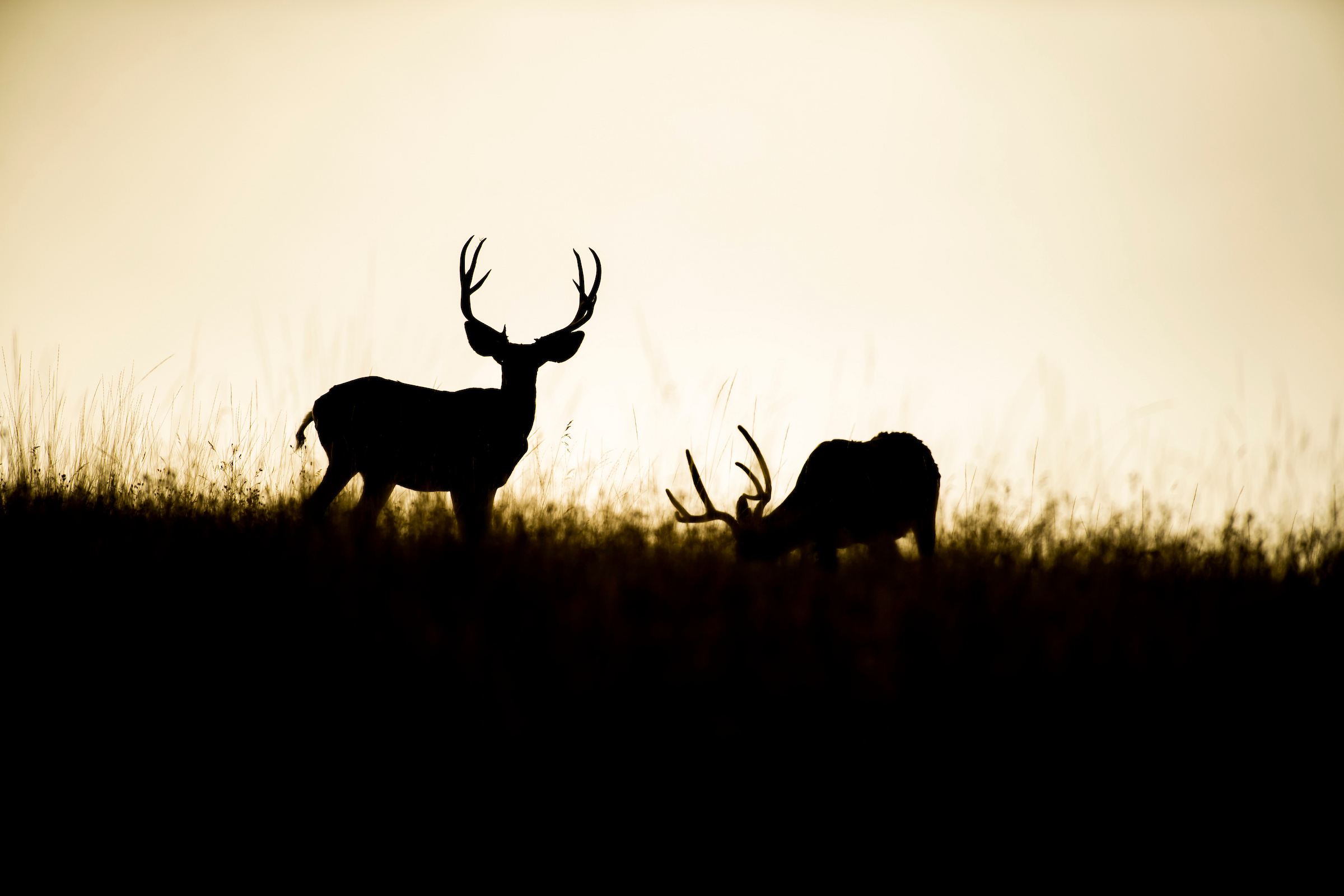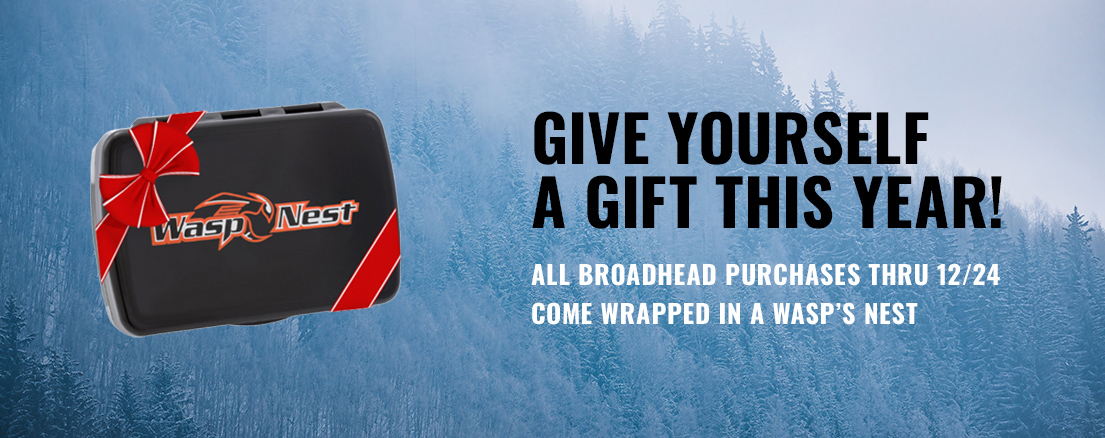Do You Have What it Takes to Bowhunt Mule Deer?
Sneaking to within bow range of a big muley buck is one of the most challenging hunts in North America
Tall tines protruding above the sage confirm that the mule deer buck is still bedded and unaware that you’ve crawled to within bow range. Your rangefinder reads 32 yards to the sage bush he’s bedded behind, meaning your shot will be about 33 yards. But the buck’s body is completely obstructed, so he’ll need to stand before you have a clear shot. You figure it won’t take long.
But two hours later the buck seems sound asleep, and your impatience prompts you to take action. You pick up a nearby stone and think to yourself, Should I throw it to make him stand, or should I keep still? You know that lobbing the stone over the buck could get him to stand up, but it could also cause him to bolt like his tail’s on fire.
You decide that the risk is worth the reward and are preparing for the throw, but the buck suddenly erupts from his bed. The midday wind swirled and gave you away. Five hundred yards away, you see the towering tines, which were in bow range for two hours, disappear over the horizon. You’re deflated. But you’re also a mule deer hunter.
Stalking muleys with a bow is especially challenging, particularly when your goal is to arrow a mature buck. You can practically count on heartbreaking close calls like the scenario painted above. Still, there are plenty of successful mule deer bowhunters every season. Here are some tips to help you join them.
FINDING MULE DEER BUCKS
Mule deer share the rolling prairies of the Dakotas, Kansas, and western Nebraska with the whitetail. The high desert elevations have them, and so does the highest alpine habitat in the Rockies. You’ll also find mule deer west of the Rockies, clear out to the West Coast, where their range overlaps with the blacktail. From Mexico’s pancake-flat deserts clear up into British Columbia, there are many places to hunt this majestic animal.
Regardless of where you find yourself with a mule deer tag, there are some guiding principles to help you find bucks during your hunt. Often, you’ll see doe and fawn groups from roadways by glassing. You might even spot some small to decent bucks that way. But to find a buck in the older age class, you’ll want to identify roadless areas where pressure is minimal. Mapping apps are a great way to do that. While you’re doing your mapping homework, also look for overlooked opportunities, such as where BLM or forest-service lands with good habitat adjoin private land with strict management and agricultural practices.
During early archery season at any elevation, look for areas that offer green food, a water source, and shade cover from the daytime heat. Do that, and you’ll likely locate a bachelor group of bucks. Once the bachelor groups divide, try remote locations where a solitary buck has food, water, and bedding cover in a small core pocket. Expect to do lots of careful glassing. During the rut, hunt areas with does, and you’ll likely find a dominant buck guarding a harem and fending off subordinate bucks. Late season finds large herds on and near major food sources.
STALKING 101
Although stationary ambushes work in some instances, the classic mule deer hunt is a spot-and-stalk foray. Slipping to within bow range of a buck, especially if other deer accompany it, is the ultimate accomplishment and a tall order for any bowhunter. You can expect multiple stalks to collapse before you get a shot. The best mule deer hunters exhibit stalwart patience and won’t attempt to stalk a buck until he beds in an ideal location. Rookies often set off on stalks the moment they see a buck of interest. It’s possible to get within range of a standing or moving deer, but a bedded buck usually provides a better opportunity.
Before embarking on a stalk, be mindful of the wind direction, landmarks between you and the buck, and other deer along your intended stalking route that could potentially ruin your sneak. Also, be aware of the present terrain features and how they might instigate swirling winds. And don’t forget about the thermals when hunting in the mornings and evenings.
When you stalk, keep in mind that deer usually stand a few times after they initially bed. Sometimes they stretch, defecate, browse, and then bed right back down in the same spot. Other times, they might move to subsequent beds. Knowing that, try to get a visual of the buck in mid-stalk, especially if the stalk is taking longer than expected. If the buck has shifted positions or is no longer in the bed, you’ll want to be aware of that so that you can adjust your stalk or halt it.
WHEN TO GET AGGRESSIVE
While patience is the name of the game during most mule deer stalks, the mule deer rut is the time to pull out the stops and get aggressive. A big buck guarding a doe harem and warding off satellite bucks creates a chaotic situation. You have to stay sharp and move fast when you see an opportunity to dart in for a shot. Also, you might want to consider using a 2-D decoy, such as the Muley Buck from Montana Decoy.
Challenging a buck with a subordinate-buck decoy is highly effective, particularly when you get within 100 yards before presenting the decoy. Using a decoy has inherent risks, so you’ll need to be careful. Always avoid using a decoy during firearms seasons.
SHOT DISTANCE
Most mule deer are bow-killed at considerably longer distances than whitetails. This doesn’t give you the license to lob arrows at ridiculous range. It simply means you’ll need to work on your proficiency and develop greater confidence at longer ranges. If you’ll shoot no farther than 35 yards at a whitetail, you’ll want to work hard and practice diligently to stretch your maximum effective range to 50, even 60 yards. Even then, don’t attempt a shot that you’re not 100 percent confident you can make. Bowhunting mule deer has many challenges, especially in the high country, where just accessing deer habitat is difficult. But, when you persevere through the obstacles and arrow a buck, you’ll taste one of the most gratifying successes in all of bowhunting.
— Story by Wasp Archery Staff; Mule deer image by John Hafner
 THE WASP BULLET: AN IDEAL FIXED-BLADE FOR LONG-RANGE SHOTS
THE WASP BULLET: AN IDEAL FIXED-BLADE FOR LONG-RANGE SHOTS
Because shot distances are often on the long side, many mule deer hunters prefer low-profile broadheads for long-range accuracy. Mechanicals are a natural choice, but there are also some great fixed-blades that fit the bill including the 100-grain Wasp Bullet. This broadhead has a 1-inch cutting diameter but sports three, razor sharp .027″ thick stainless-steel blades and the SST tip for superior penetration and durability. The streamlined profile is aerodynamic and flies true, even at high speeds and over longer distances.
View All Posts

